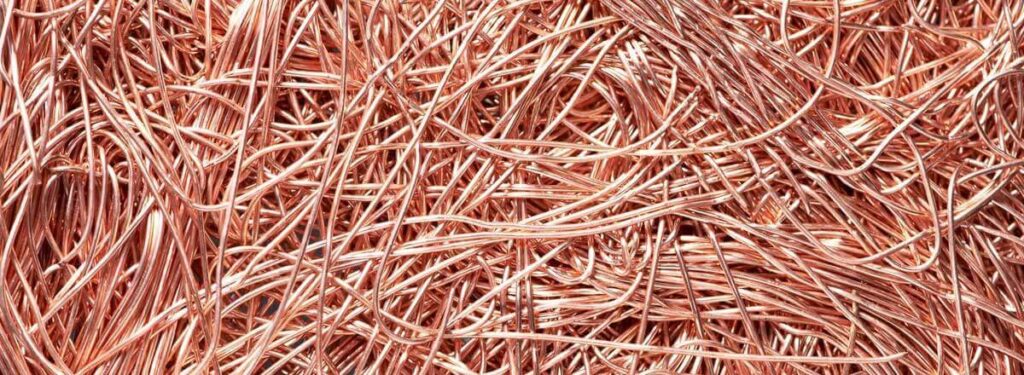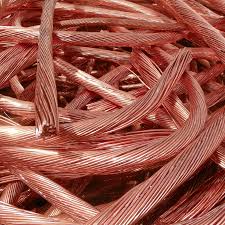Copper is one of the most essential and widely used metals in the world, playing a crucial role across various industries, including construction, electronics, renewable energy, and transportation. Due to its excellent conductivity and malleability, copper is used in electrical wiring, plumbing, renewable energy systems like solar panels and wind turbines, and countless other products. As the demand for copper continues to grow with advancing technologies and infrastructure, staying updated on copper prices is crucial for both businesses and investors.
For businesses that rely on copper in their manufacturing processes, understanding the current price of copper helps make informed decisions regarding production costs and supply chain management. Investors, on the other hand, must track copper price movements to navigate commodity markets, anticipate trends, and make profitable investments. In this blog, we will explore the factors influencing the price of copper, its current price per pound, and its historical trends. We’ll also discuss how to monitor copper prices, buy copper, and why copper pricing is critical for investors.
What Affects the Price of Copper?
The price of copper is not fixed and fluctuates depending on several global and local factors. These factors include supply and demand, geopolitical events, and the economic environment. In this section, we’ll break down the key drivers that influence the price of copper.

1. Supply and Demand
One of the primary factors affecting copper prices is supply and demand. The demand for copper tends to rise with increased industrial activity, particularly in sectors like construction, electronics, and transportation. As cities expand and the global economy grows, the need for copper in infrastructure and electrical systems also increases. For example, the rise in electric vehicle (EV) production has led to greater demand for copper due to its use in batteries, wiring, and motors.
On the supply side, copper is extracted from mines, with major copper-producing countries including Chile, Peru, and China. If there is a disruption in the supply chain—such as a mine strike, natural disaster, or trade dispute—copper prices can rise due to reduced availability.
2. Global Market Trends
Copper prices are heavily influenced by global economic trends. A booming global economy often leads to higher demand for copper, especially from fast-growing markets like China and India. Conversely, during economic slowdowns, demand decreases, causing a drop in prices. Additionally, copper is often seen as a “leading indicator” of global economic health—when copper prices rise, it may signal expanding industrial activity, whereas declining prices can indicate slowing economic growth.
3. Geopolitical Events
Copper production is concentrated in certain parts of the world, such as South America, Africa, and parts of Asia. Geopolitical tensions or conflicts in these regions can lead to production disruptions, creating volatility in copper prices. For example, political unrest in Chile, which produces a significant portion of the world’s copper, can lead to concerns about a reduced copper supply, resulting in higher prices. Similarly, trade wars or tariffs between major economies like the U.S. and China can impact copper prices, as the metal is a key component in many global supply chains.
4. Inflation and Economic Conditions
Inflation and broader economic conditions also play a significant role in copper pricing. During periods of high inflation, the prices of raw materials, including copper, typically rise. Central banks, such as the Federal Reserve in the U.S., influence inflation through monetary policies, which in turn can affect copper prices. Additionally, fluctuations in the value of the U.S. dollar—often tied to inflation—can also impact copper pricing, as copper is typically traded in U.S. dollars. A weaker dollar can drive copper prices higher, while a stronger dollar can lower prices.
Current Copper Price Per Pound
The current price of copper per pound can fluctuate daily based on market conditions, supply-demand balances, and global events. As of the most recent data, the price of copper per pound is $3.80. This price reflects a moderate increase over the past month, driven by a combination of factors, including strong industrial demand and supply disruptions in key mining regions.
To stay updated with real-time copper prices, refer to reliable financial platforms such as the London Metal Exchange (LME) or Kitco, which provide daily updates on copper pricing. These sources track the spot price of copper, which represents the current market value for immediate delivery

In recent weeks, copper prices have seen a gradual increase due to a combination of higher industrial demand and supply chain issues affecting copper-producing countries. For example, the ongoing strike in major copper mines in Chile has contributed to supply concerns, leading to price increases. Additionally, rising demand from the renewable energy sector, particularly for solar panel and wind turbine production, has added upward pressure on copper prices.
Historical Copper Price Trends
Copper has seen significant price fluctuations over the past few decades. Understanding these historical trends is crucial for assessing the current market and predicting future movements.
Key Moments in Copper Price Fluctuations
- 2008 Financial Crisis: During the global financial crisis, copper prices saw a steep decline, dropping from over $4.00 per pound to below $1.50 per pound. This was due to reduced industrial activity and global economic uncertainty.
- Post-Recession Recovery (2009-2011): After the crisis, copper prices surged, reaching all-time highs in 2011, as the global economy recovered and industrial demand increased. At one point, prices reached nearly $4.50 per pound.
- 2015-2016 Slump: In 2015, copper prices dropped again due to weaker demand from China and a slowdown in global industrial activity. Prices fell to about $2.00 per pound.
- Recent Surge (2020-Present): The most significant recent surge in copper prices came in 2020 and 2021. As the world economy bounced back from the COVID-19 pandemic, demand for copper surged, especially from the renewable energy sector. Prices reached nearly $4.80 per pound in 2021, driven by both supply chain issues and higher demand.
Comparison with Other Metals
Copper’s price movements often correlate with other base metals like aluminum, zinc, and lead, although unique factors drive each metal’s pricing. In comparison to gold, which tends to be more stable and acts as a hedge against inflation, copper is more volatile and is seen as a barometer for economic health.
How to Buy Copper and Monitor Prices
For individuals and businesses looking to buy copper, there are a few options available:
1. Spot Market
The spot market is the most common way to buy copper, where buyers and sellers agree on a price for immediate delivery. The price of copper on the spot market is closely tied to the LME price, which is the global benchmark.
2. Copper Futures
Futures contracts are another way to buy copper. These contracts allow buyers to agree to purchase copper at a specified price at a future date. Futures trading is typically done on commodities exchanges such as the Chicago Mercantile Exchange (CME) or the LME.
3. Direct Purchases from Suppliers
Businesses may also choose to buy copper directly from suppliers or manufacturers, particularly for large-scale industrial use. Many large-scale copper consumers, such as electrical and construction companies, establish long-term supply agreements with mining companies or distributors.
Tracking Copper Prices
To track copper prices, you can use a variety of online tools and resources:
- Financial News Websites: Sites like Bloomberg, Reuters, and MarketWatch provide real-time copper price updates and market analysis.
- Commodity Trading Platforms: Platforms like Kitco, Investing.com, and Trading Economics offer live copper price charts and trends.
- Mobile Apps: There are several apps, like Metal Price Calculator, that allow you to monitor copper prices on the go.
Why Copper Pricing Matters to Investors
For investors, copper pricing is a key consideration, especially for those involved in commodities trading or looking to invest in copper-related stocks. Copper is an essential industrial metal, and its price trends can indicate broader economic conditions.
Impact on the Stock Market
The price of copper is often seen as a leading indicator of global economic health. Rising copper prices can signal increased industrial demand, while falling prices may indicate an economic slowdown. As such, investors often look at copper price trends when making decisions about investments in industries like construction, manufacturing, and energy.
Commodities Trading
Copper is a popular commodity for trading, with futures contracts allowing investors to speculate on price movements. Commodities traders often use copper as part of a diversified portfolio to hedge against inflation and market volatility.
FAQS
How much is 1 lb of copper worth?
As of October 23, 2025, the price of copper per pound is approximately $4.99. This reflects a 0.67% increase from the previous day, indicating a steady upward trend in copper prices over the past month.
How much is 100 pennies worth in copper?
Each penny weighs 2.5 grams and is composed of 97.5% zinc and 2.5% copper. Therefore, the copper content in one penny is about 0.0625 grams. For 100 pennies, this totals approximately 6.25 grams of copper.
Given the current copper price of $4.99 per pound (1 pound = 453.592 grams), the value of 6.25 grams of copper is approximately:(4.99453.592)×6.25≈0.0685 USD(453.5924.99)×6.25≈0.0685 USD
Thus, the copper content in 100 pennies is worth about $0.0685.
How much is scrap copper in Texas?
Scrap copper prices in Texas vary based on the grade and quality of the material. As of October 2025, the approximate prices are:
- #1 Copper (clean, uncoated copper): $3.91 per pound
- #2 Copper (slightly contaminated): $3.75 per pound
- Insulated Copper Wire: Prices range from $1.98 to $2.65 per pound, depending on the insulation and cleanliness
These prices can fluctuate based on market demand, supply conditions, and regional factors.
Is copper going to $15,000 per ton?
Some analysts project that copper prices could reach up to $15,000 per metric ton in the coming years. For instance, Bank of America forecasts that copper prices could peak at $15,000 per ton by 2027, driven by ongoing production disruptions and sustained demand in sectors like electrification and renewable energy.
This projection translates to approximately $6.80 per pound, which would represent a significant increase from current levels. However, it’s important to note that such forecasts are subject to change based on various market dynamics, including supply chain developments, technological advancements, and geopolitical factors.
Conclusion
Copper is a critical metal with numerous applications in various industries, ranging from construction to electronics. Staying updated on copper prices is essential for businesses, investors, and anyone involved in industries that rely on copper. By understanding the factors influencing copper pricing, monitoring trends, and knowing where to buy copper, you can make more informed decisions and navigate the market effectively.
As of today, copper prices remain relatively high, driven by strong industrial demand and supply disruptions. Whether you’re looking to invest in copper, purchase it for manufacturing, or simply monitor market trends, staying informed is key. To keep up with copper price fluctuations, regularly check reliable sources for real-time updates and analysis.
If you’re interested in learning more about copper prices and their impact on the global market, be sure to share this post and subscribe to receive the latest updates. Stay ahead of the curve by following copper price trends and making well-informed decisions.
